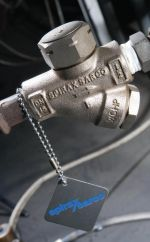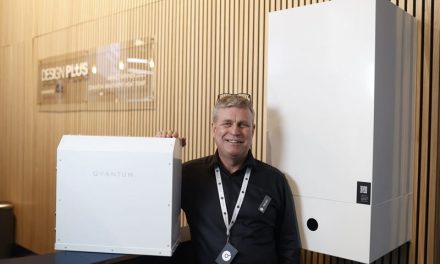 All steam systems produce condensate, which is hot, chemically treated water that can be reused in the boiler. And, as Paul Mayoh of Spirax Sarco explains, a new condensate recovery system can pay for itself very quickly and even an existing system can be upgraded with the latest techniques to reap financial gains
All steam systems produce condensate, which is hot, chemically treated water that can be reused in the boiler. And, as Paul Mayoh of Spirax Sarco explains, a new condensate recovery system can pay for itself very quickly and even an existing system can be upgraded with the latest techniques to reap financial gains
Reducing energy costs and cutting carbon emissions is a constant pressure that UK organisations have to deal with. In addition, water remains a precious resource across much of the UK, despite this year’s unusually heavy rainfall. Therefore, the spotlight on water conservation can only intensify.
This clearly has an impact on steam users because energy and water are the two key ingredients in steam. One of the most effective ways to save both water and energy in a steam system is condensate recovery – installing recovery systems if they are not already present, or enhancing existing systems to improve their effectiveness.
Condensate contains around 20% of the energy of the steam from which it came, which is why most steam system operators recognise condensate as being a particularly valuable resource. In reality, many UK sites already have condensate recovery systems in place, although nearly all could be enhanced by the latest techniques.
Aiming for 75-80% recovery
Most systems could be achieving a condensate recovery rate of 75-80%. The exceptions are sites with processes that inject steam directly into product, for example in some food manufacturing or in animal feed mills.
For other sites, returning condensate to the boiler can save thousands of pounds per year in energy alone. Using hot condensate to heat the boiler feedwater means the boiler has less to do in converting the water to steam. In other words, less fuel is needed to produce steam from hot water rather than from cold water.
Additionally, condensate returned to the boiler feed tank reduces the need for blowdown, which is used to reduce contamination in the boiler water. This helps to reduce the energy lost during the blowdown process.
Save water costs
Any condensate not re-used must be replaced with fresh water. This top up will incur additional water charges. Re-using as much condensate as possible also minimises the use of costly chemicals to treat raw water from the utility.
Furthermore, in the UK, trade effluent above 43°C cannot be returned to the public sewer because it is detrimental to the environment and may damage pipes. Condensate above this temperature must be cooled if discharged, which could incur extra costs. Similar restrictions apply in most countries and effluent charges and fines may be imposed by water suppliers for non-compliance.
Boosting condensate recovery
There are several essential steps in any effective condensate recovery system and it is well worth reviewing them all to improve the system’s condensate recovery rate to hit the magic 80%.
The steam trap is the most important link in the condensate loop because it releases condensate and incondensable gases from the steam system while retaining steam within the process for maximum efficiency. Therefore, a good starting point for improving condensate recovery is to commission a professional steam trap survey to identify where gains could be made. Such a survey will also give an estimate of the potential financial benefits through upgrades – helping to justify maintenance expenditure.
After leaving the steam trap, the condensate may need to be pumped back to the boiler house. Condensate pumps may be electrically powered or mechanical, which are usually more efficient because they use the steam itself for motive power.
Automatic pump traps combine the functions of a steam trap and condensate pump. Under normal operating conditions, these act as conventional steam traps. However, in conditions where back pressure would cause a normal trap to stall and flood the system, pump traps automatically switch to pumping mode to remove the condensate. Automatic pump traps are particularly effective for use with heat exchangers and other plant that run with varying demand.
Once again, professional advice can be sought on the most suitable pumping technology for a specific system.
Having extracted the condensate from the steam system and sent it to the boiler house, it then needs to be mixed with the existing water in the boiler feed tank. This is most efficiently achieved by a deaerator head that mixes returned condensate, flash steam and cold make-up water as they are fed into the feedwater tank.
Savings in a flash
Another effective energy saving measure is flash steam recovery to extract heat from condensate before returning it to the boiler feedwater tank. Flash steam is released from hot condensate when its pressure is reduced, typically when steam traps discharge condensate or when water is removed from the boiler during the blowdown process.
In any steam system seeking to maximise efficiency, flash steam is separated from the condensate in a flash vessel, where it can be used to supplement any low pressure load. Every kilogram of flash steam used in this way is a kilogram of live steam which does not need to be supplied by the boiler.
The benefits of an effective condensate recovery system are many-fold. Each steam system is different and only a technical assessment and cost saving calculation can determine the payback of a particular project. However, typically the payback is between one and two years, with some measures paying for themselves in mere weeks, making condensate recovery an attractive proposition for any steam using organisation.



